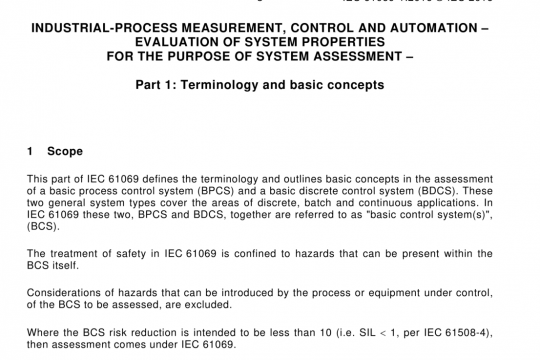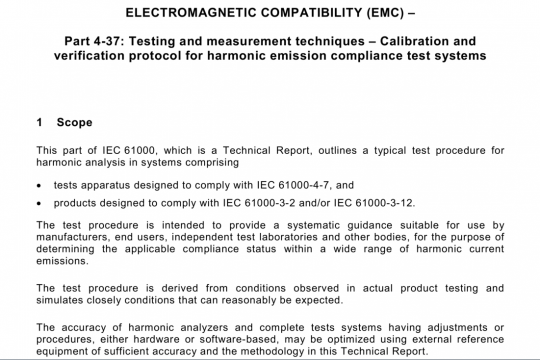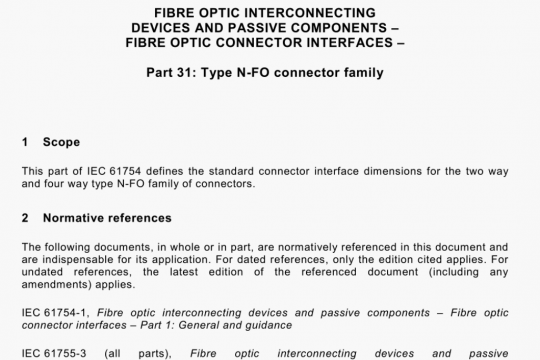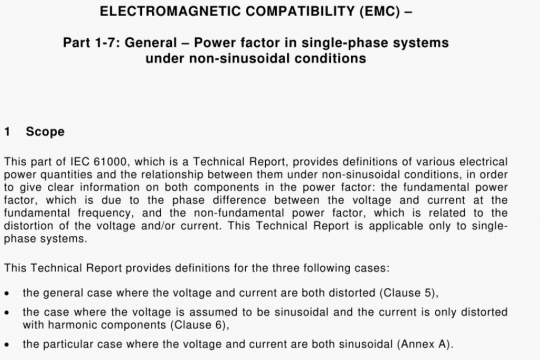IEC TR 62970 pdf free download
IEC TR 62970 pdf free download.Guidance on how to conduct round robin tests for household and similar electrical appliances.
Usually the full parameter set of a measurement procedure should be covered (e.g. parameters as set out in IEC 60456 washing machine like washing performance, consumption values, time, rinsing efficiency). Noise may be seen as a different measurement procedure.
If repeatability and reproducibility of the measurement standard are to be assessed, all additional materials used for the testing should be as defined in the measurement procedure, and should not be specially selected. (Examples of such materials in the case of washing machine tests would include test swatches, soils and detergent.)
If it is considered likely that the reproducibility of results could be affected by batch-to-batch variability or different suppliers within given tolerances of the test material, this can form part of the RRT. In this case, different batches or different suppliers of material would need to be included in the test design of the RRT.
4.1.3 Measurement procedure
The measurement procedure(s) to be used for testing should be clearly defined. Preferably RRTs should be based on published IEC standards. For RRTs supporting standardization work, it may be necessary to use working papers such as a Committee Draft (CD) or even Document for Comments (DC) as the measurement procedure. Alternatively, national, international and/or industrial standards may be used and, where necessary, combinations of more than one measurement method can be used. It is essential therefore that clear instructions are given on which version of a measurement standard the RRT is based. If deviations between the standard used for the RRT and a later published standard exist, care should be taken in the interpretation of the results of the RRT in relation to the final published standard.
4.1.4 RRT procedure
The RRT procedure is based on sending one or more products to different laboratories to be tested according to the defined measurement procedure(s). Therefore, the same sample of the product(s) should be forwarded from laboratory to laboratory (serial procedure).
Care should be taken to ensure no damage or change (e.g. aging) occurs to the product during this process. Damage can be limited by ensuring the sample is properly packaged and that it is transported from laboratory to laboratory by a carrier with a proven track record of transporting delicate items.
The aging effect may be reduced using the parallel procedure described below but in any case, the extent of any aging should wherever possible be determined by re-testing the same product again in the first laboratory after it has gone through all the testing in the other laboratories. If severe changes are observed, the issue should be addressed by the coordinator to the contracting body.
As a second best alternative, more than one sample of the product selected is sent in parallel to the laboratories (parallel procedure). In this case, before the RRT begins, it should be demonstrated that all samples show similar behaviour under test. Again, the samples should wherever possible, be re-tested by the same laboratory at the end of the RRT to check for any change in behaviour under test.
For calculating reliable figures of the repeatability and reproducibility, a minimum of five laboratories should participate in an RRT. If more than 10 laboratories take part in an RRT, a parallel procedure combined with a serial procedure may be advisable for time reasons (e.g. samples showing similar behaviour are each sent to five laboratories).IEC TR 62970 pdf download.




